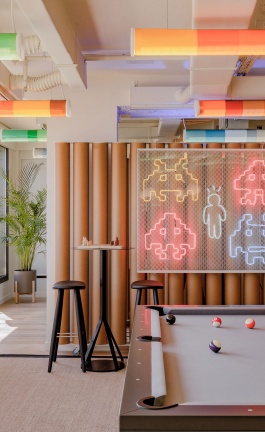Project Name
Ordinance of the Subconscious TreatmentPosted in
Furniture DesignLocation
Completed
2021| Detailed Information | |||||
|---|---|---|---|---|---|
| Project Name | Ordinance of the Subconscious Treatment | Posted in | Furniture Design | Location |
Shanghai
China |
| Completed | 2021 | ||||
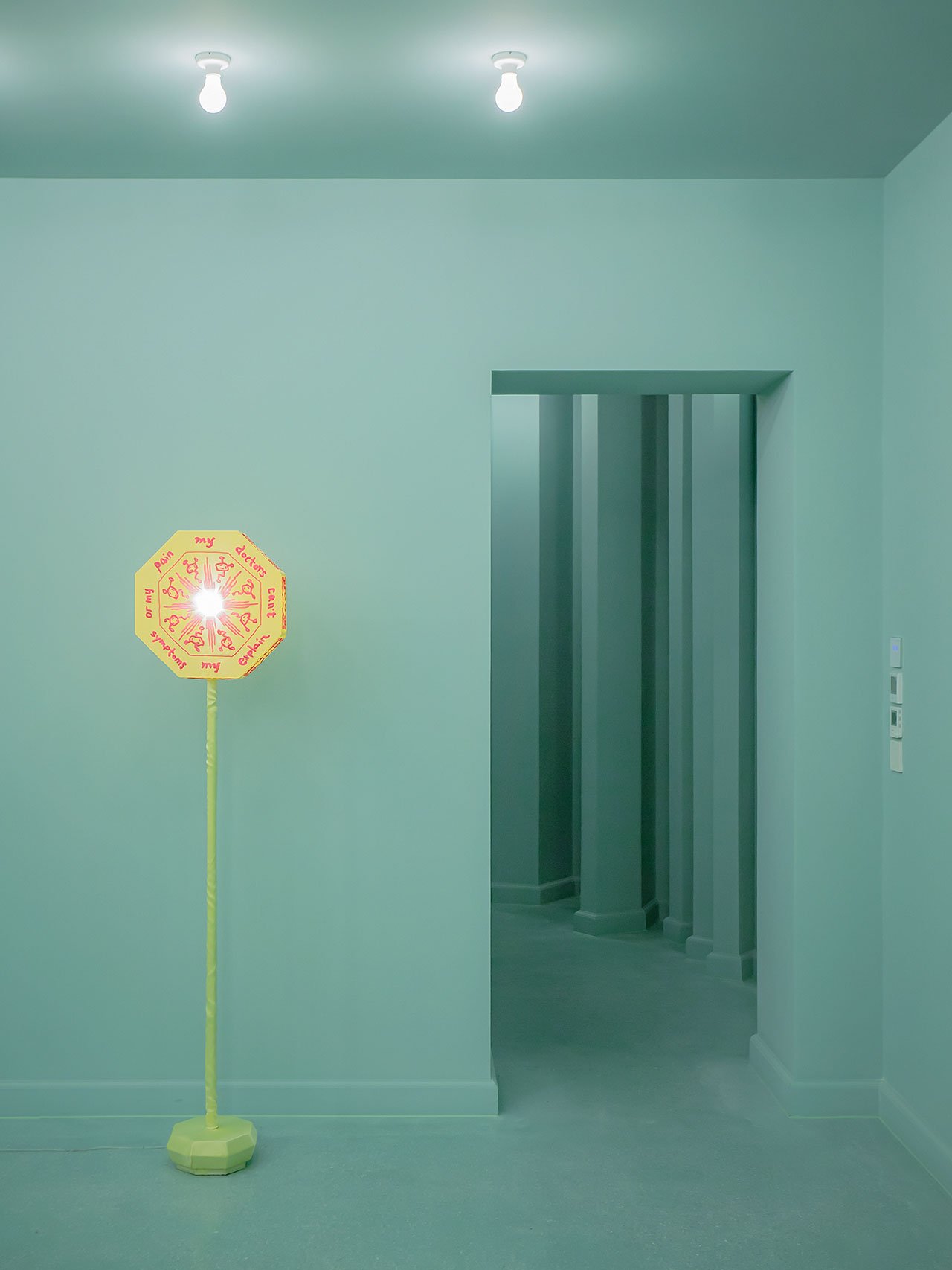
Photography © Duyi Han.
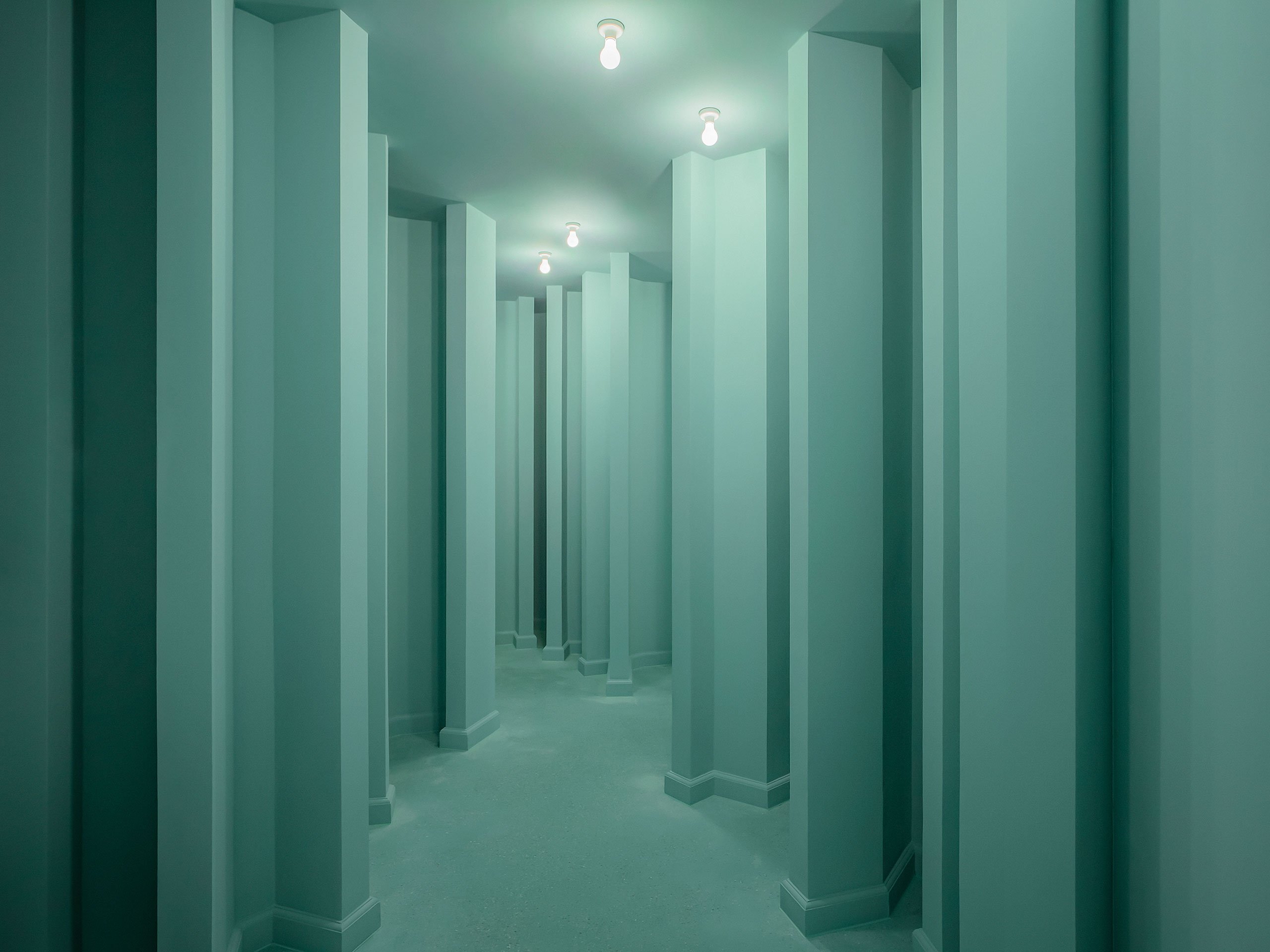
Photography © Duyi Han.
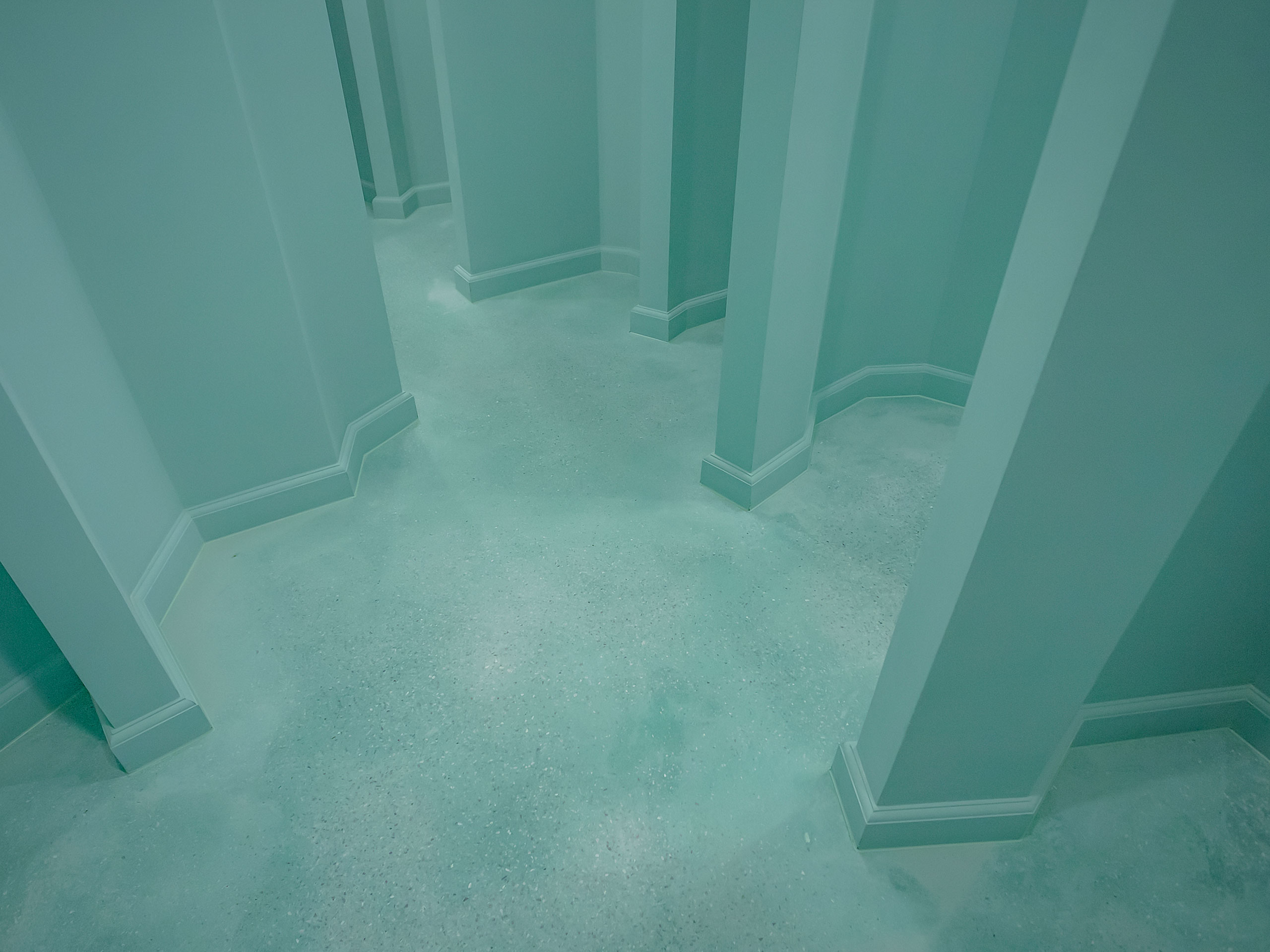
Photography © Duyi Han.
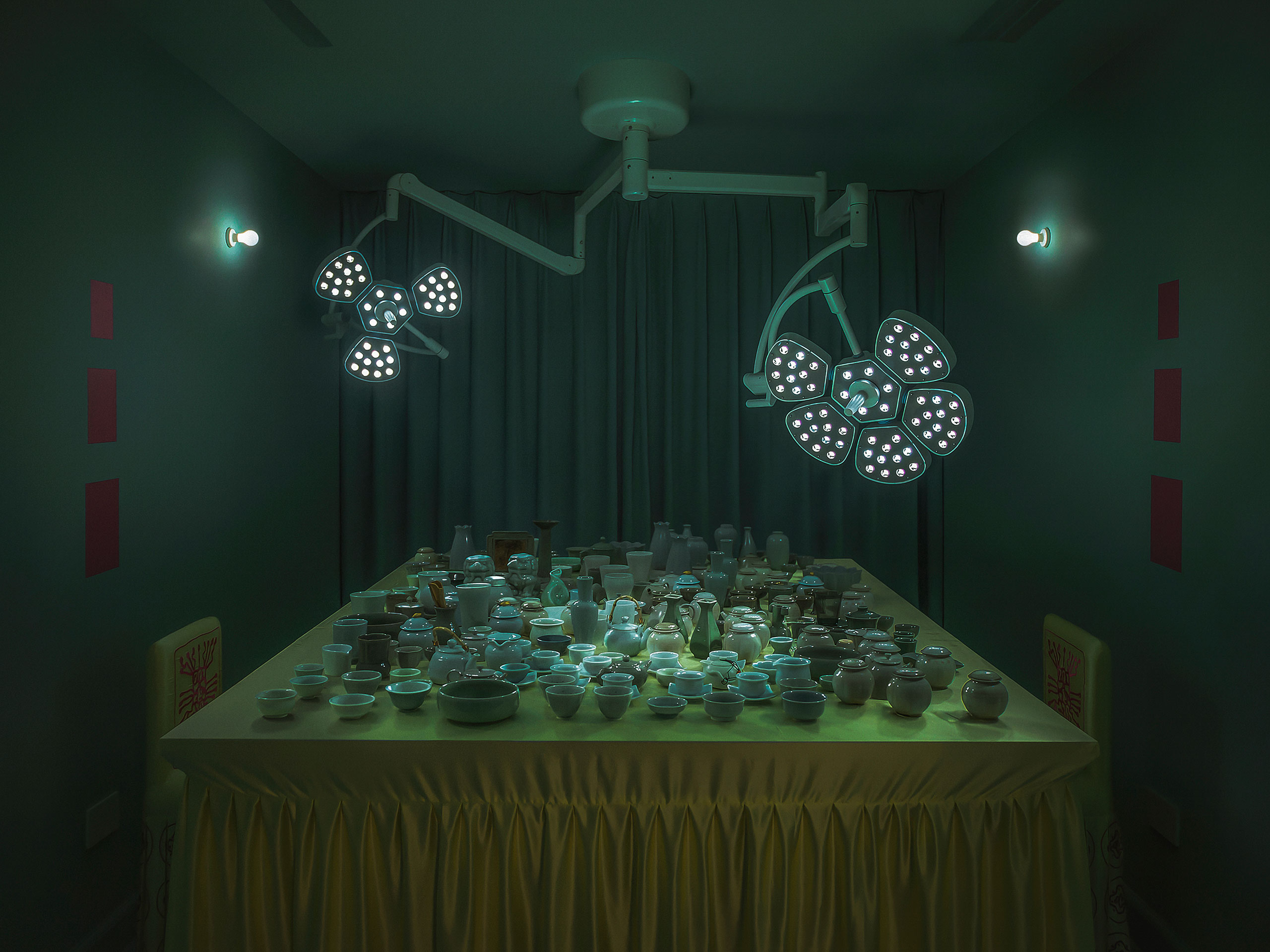
Photography © Duyi Han.
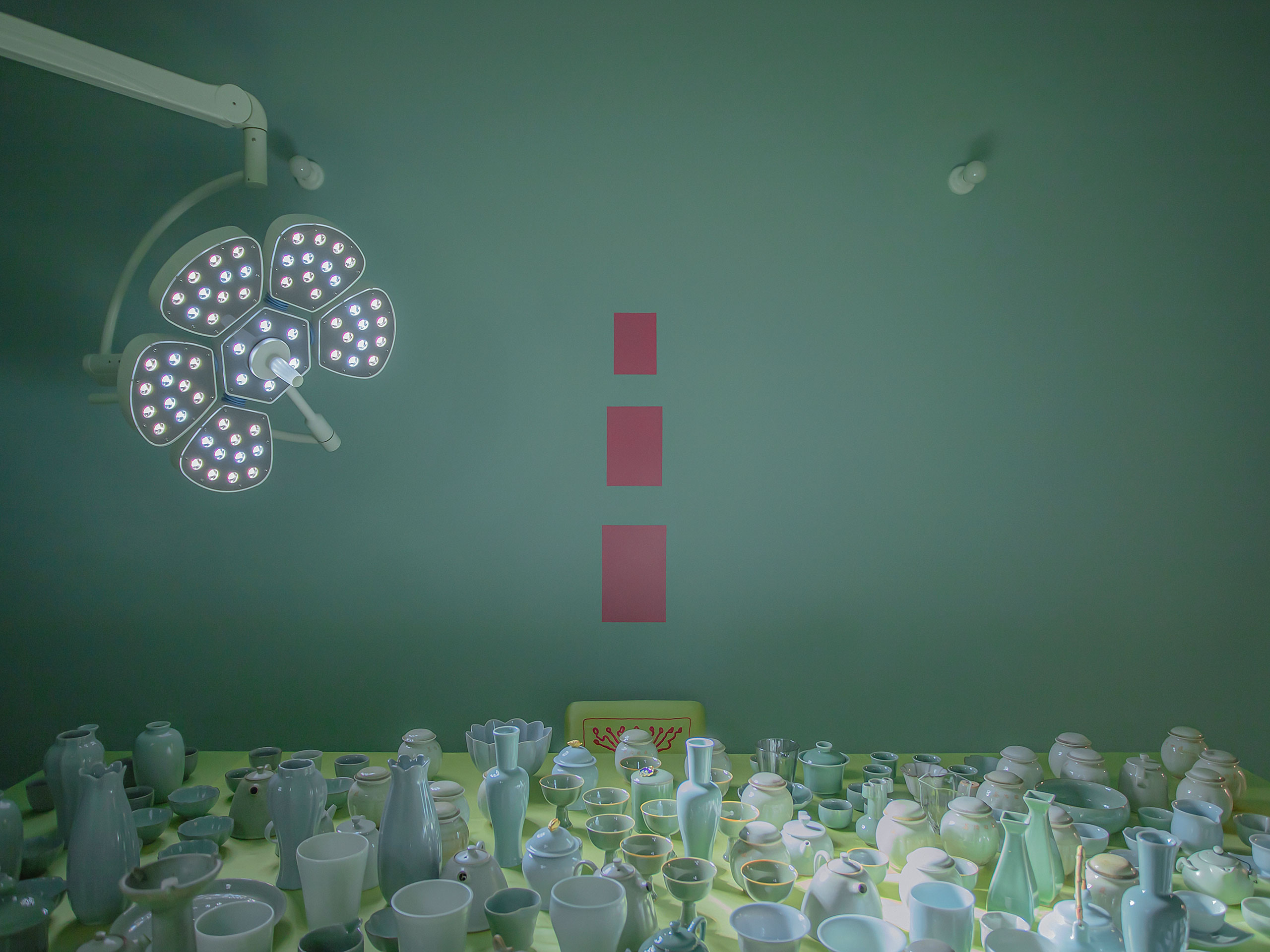
Photography © Duyi Han.
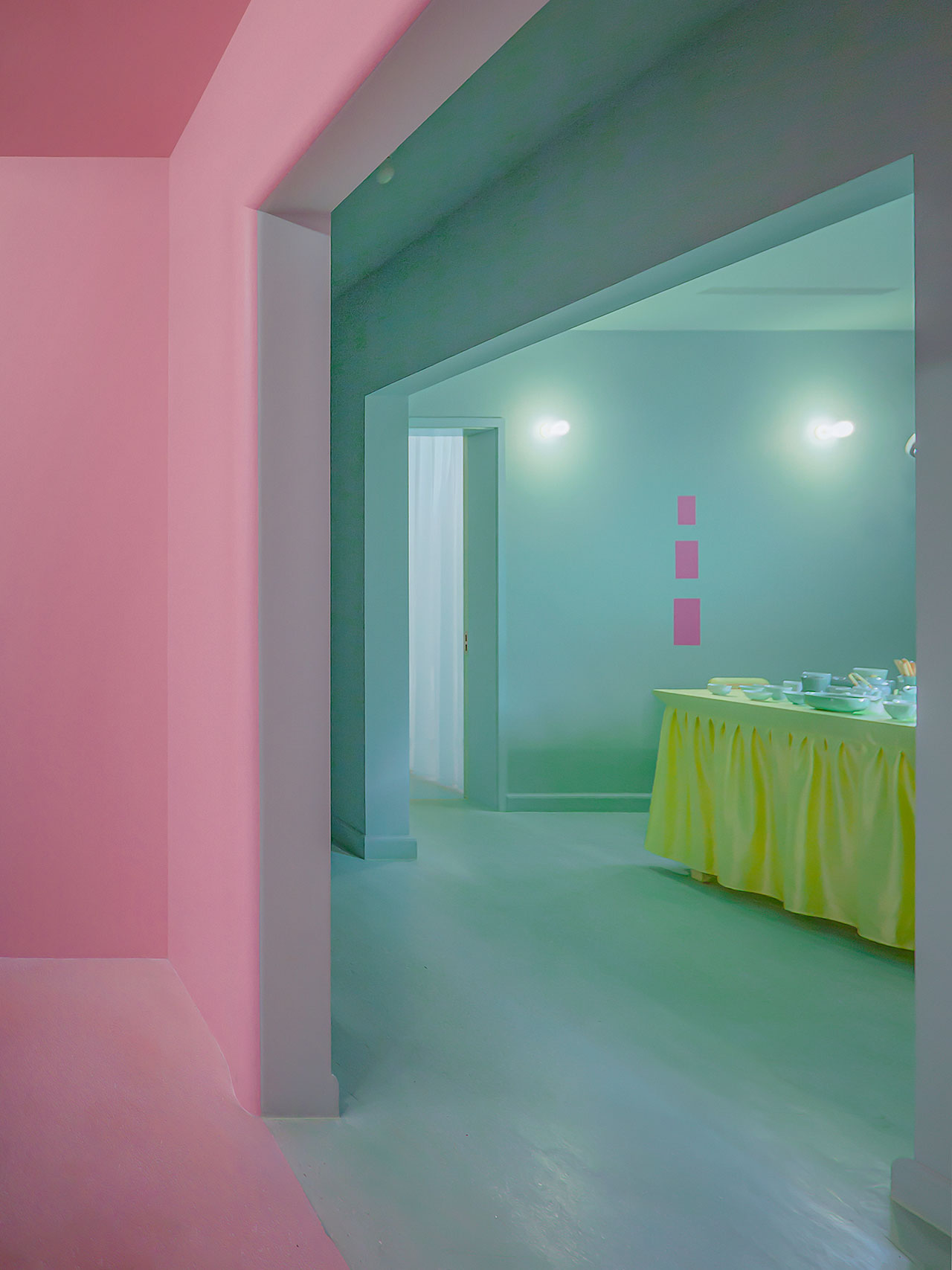
Photography © Duyi Han.
With a background in architecture, Han is a multidisciplinary artist and designer who creates both digital and physical environments and objects based on his ongoing research in the evolution of aesthetics and the sociocultural standards of beauty. Spanning architecture, interior design, visual art, digital art, sculpture, furniture and scenography, Han’s diverse range of work is underpinned by a desire to create perceptual experiences that evoke genuine emotions, and this project is no different.
Continuing his investigation of the emotional power of architecture and design, “Ordinance of the Subconscious Treatment” takes the form of a typical apartment, with each space reconfigured to physically reflect a mental state. Pink and teal-swathed monochrome rooms, sinuous spaces cloaked in sheer white curtains, and maze-like passages with protruding fractal walls create an eerie, dreamlike environment that feels like visiting mythological Chinese rock gardens and shrines. Such places abound around Shanghai, and were in fact a source of inspiration for both the interior design and the furniture collection which includes chairs, sofas, floor lamps, side tables and drawer cabinet towers.
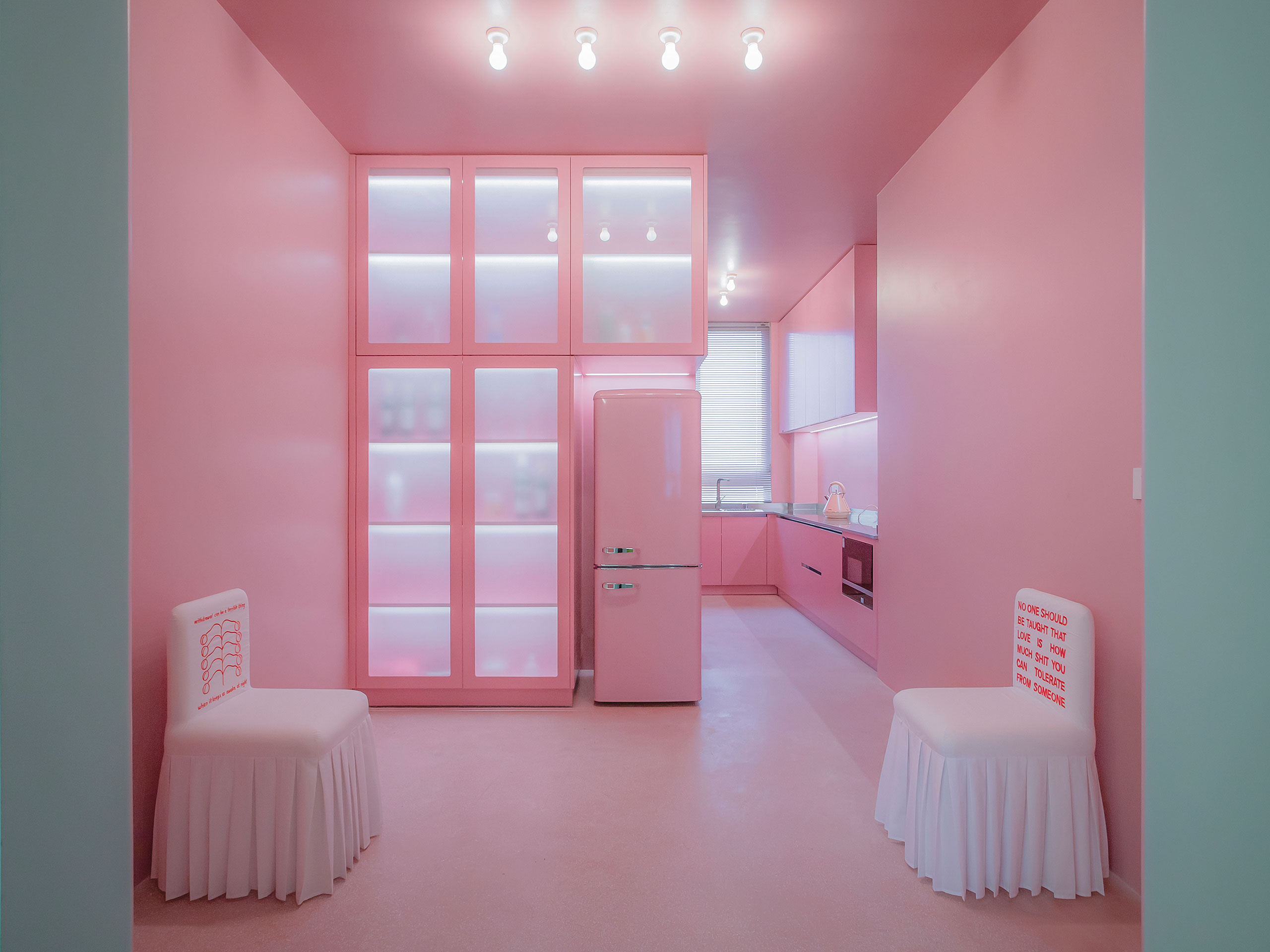
Photography © Duyi Han.
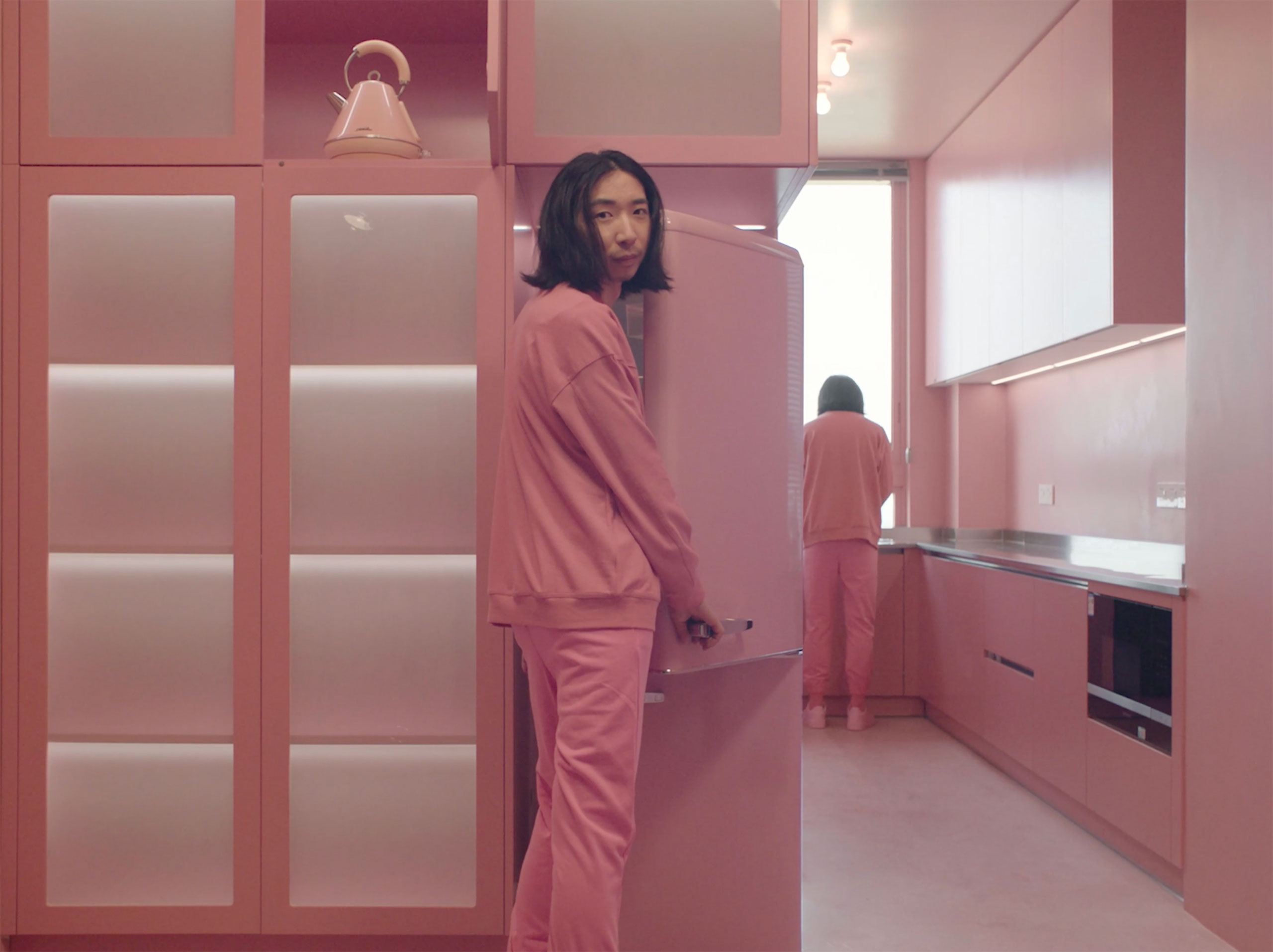
Videostill from "Hope this finds me well", directed & edited by Alexander Zeke Musca, designed by Duyi Han © Duyi Han.

Photography © Duyi Han.
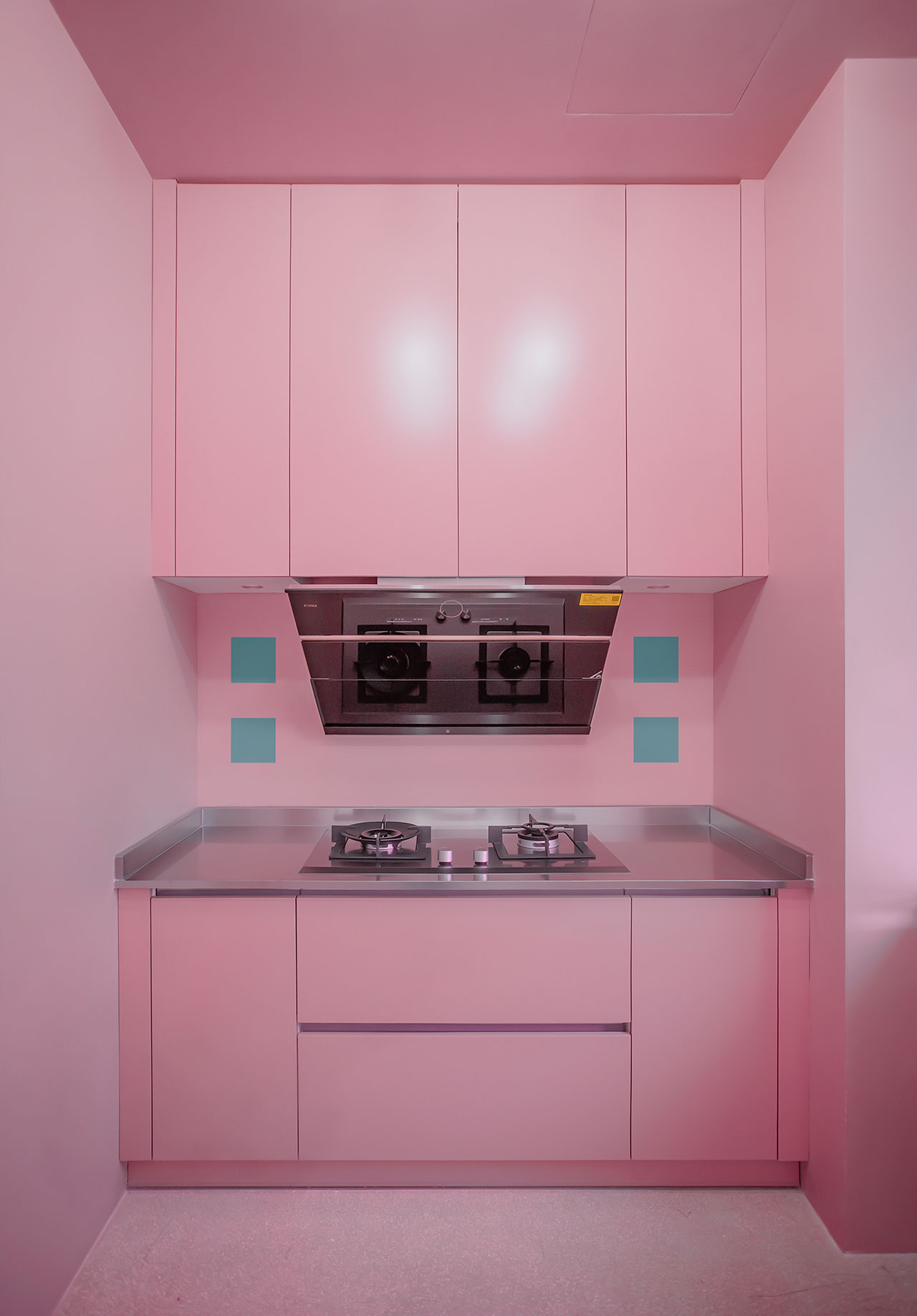
Photography © Duyi Han.
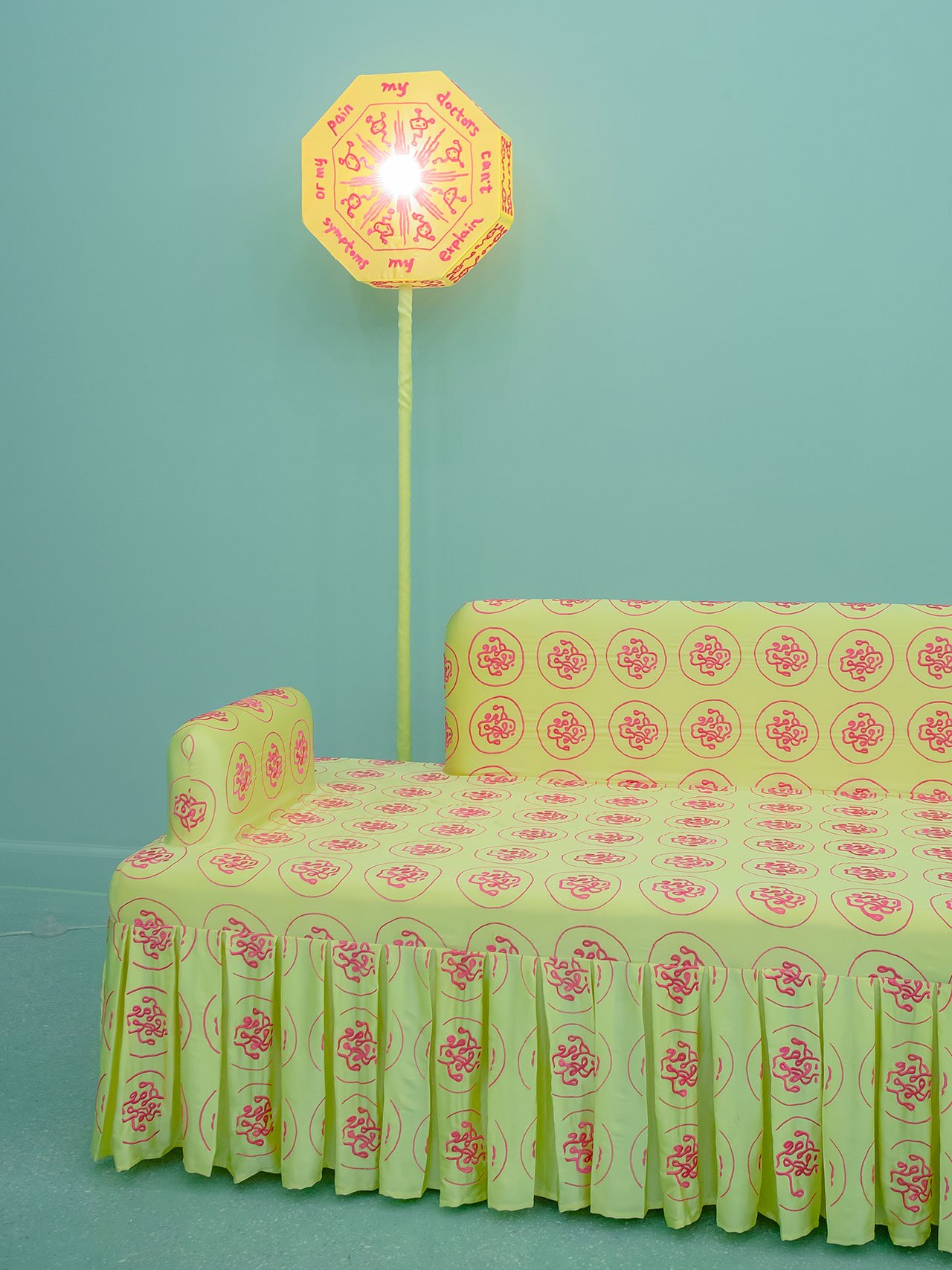
Photography © Duyi Han.
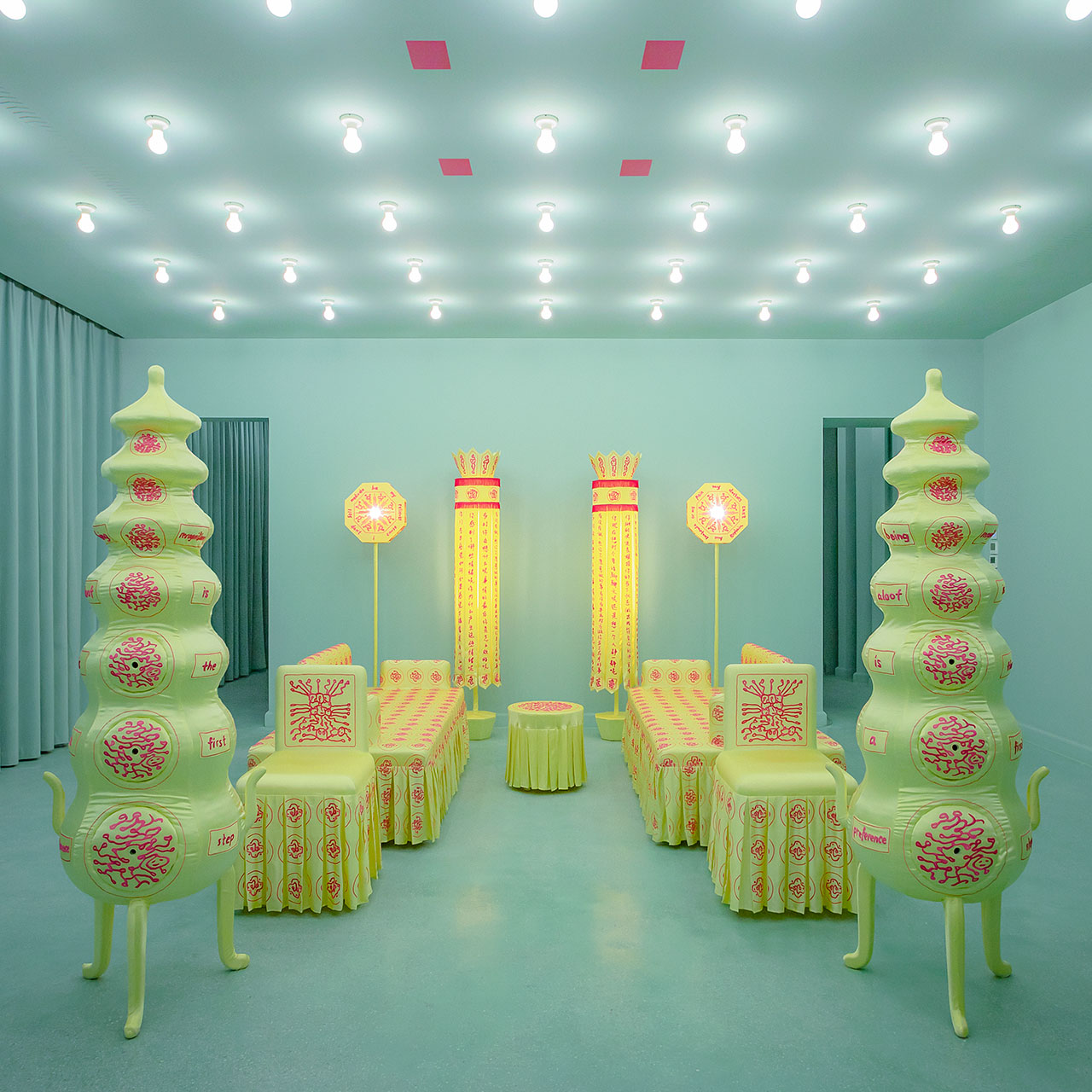
Photography © Duyi Han.
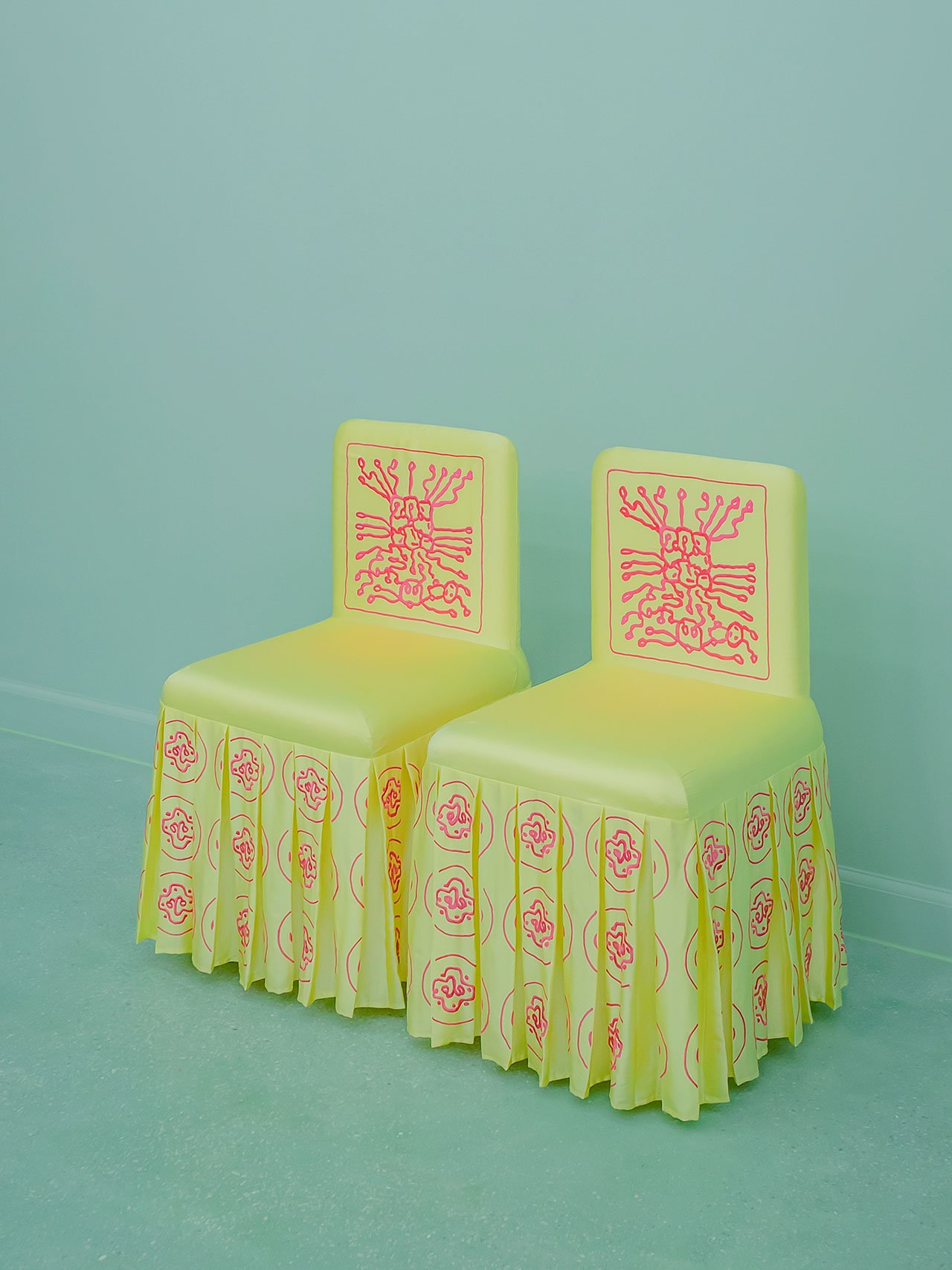
Photography © Duyi Han.
Chinese furniture in Buddhist and Taoist temples often use yellow silk fabric embroidered with religious symbols and folkloric mantras about relieving pain and pursuing happiness. Cheekily appropriating these traditions, Han has created whimsical versions of iconic religious forms – fusing, for example, a traditional Chinese incense burner with a Chinese pagoda to make a chimerical drawer cabinet.
Upholstered in silk, the pieces are hand-embroidered with stylized chemical structures of hormones, neurotransmitters and vitamins involved in promoting a happy mood and positive feelings such as dopamine, serotonin and oxytocin, and an anthology of statements related to mental health like “recognition is the first step”, “my doctors can’t explain my symptoms or my pain”, “withdrawal can be a tricky thing when it keeps us awake at night”, and “no one should be taught that love is how much shit you can tolerate from someone”.
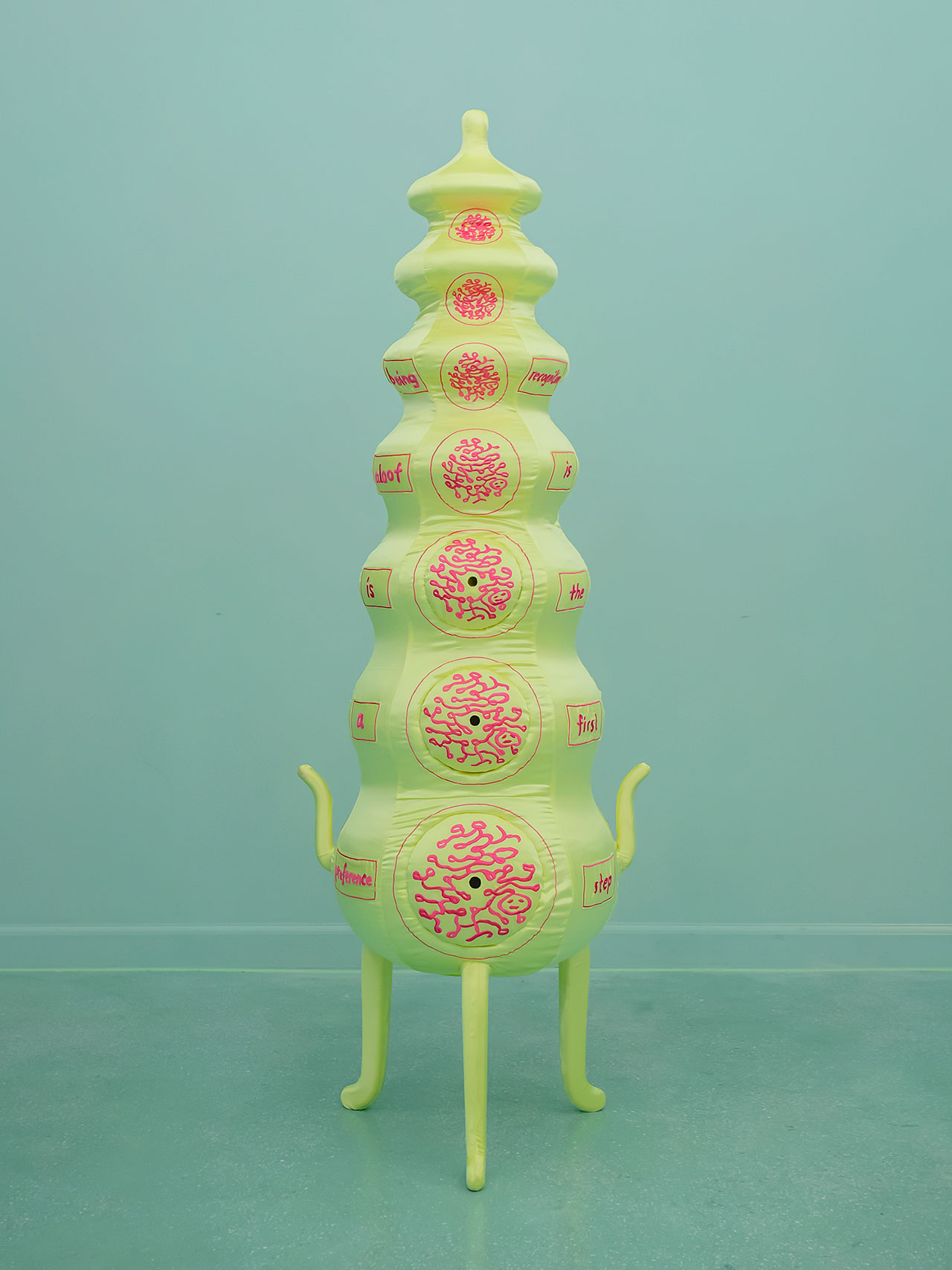
Photography © Duyi Han.
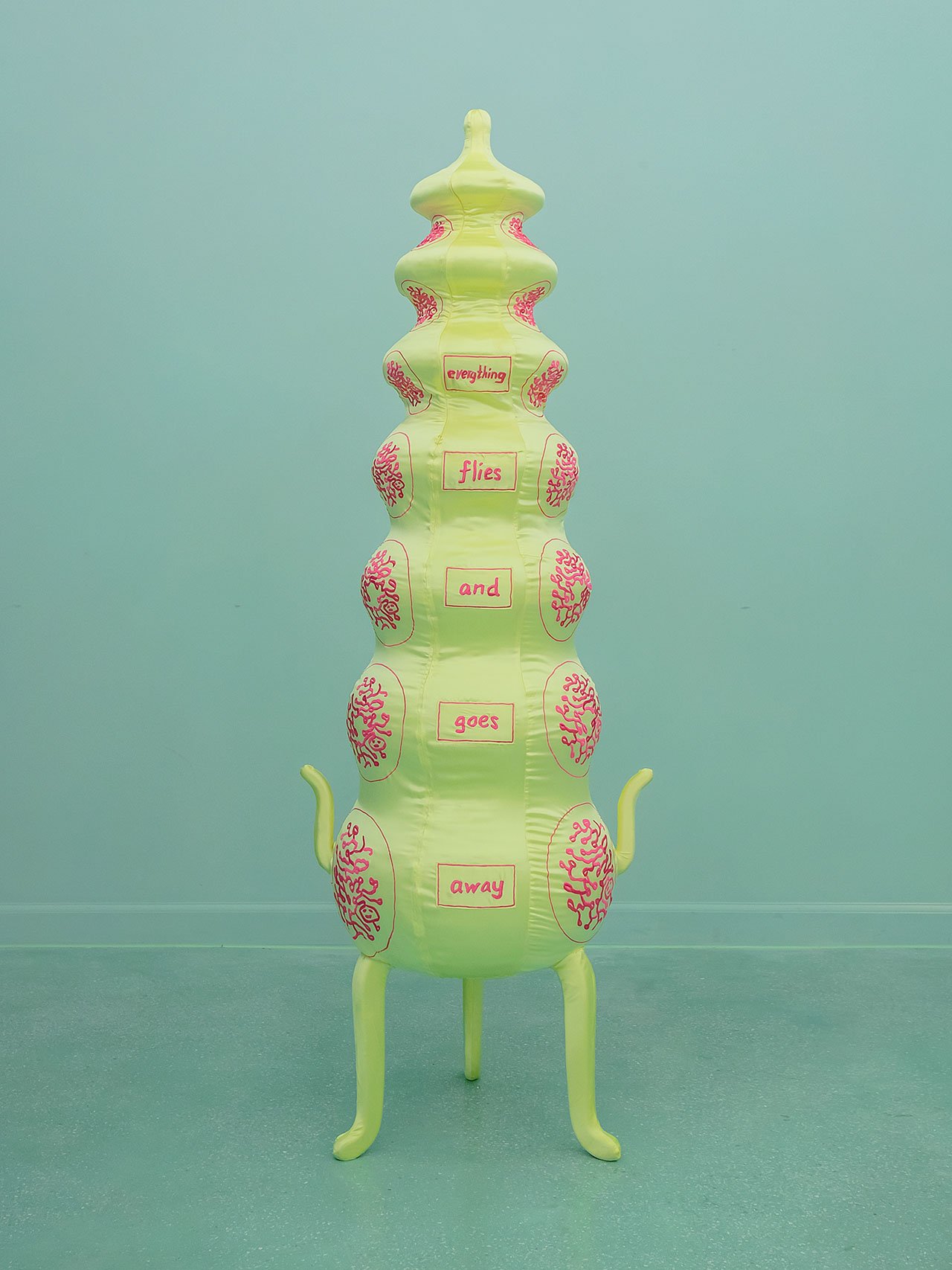
Photography © Duyi Han.
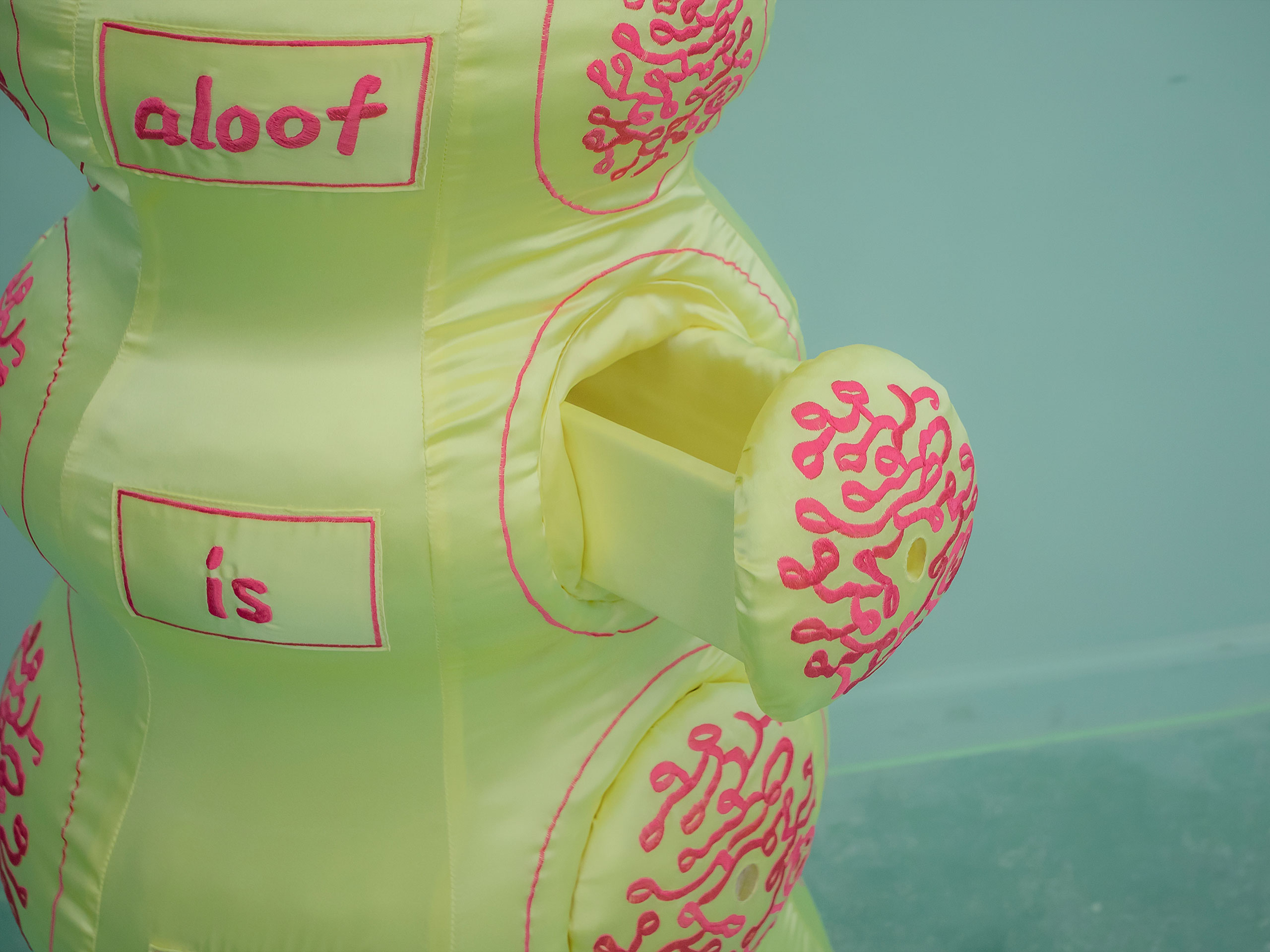
Photography © Duyi Han.
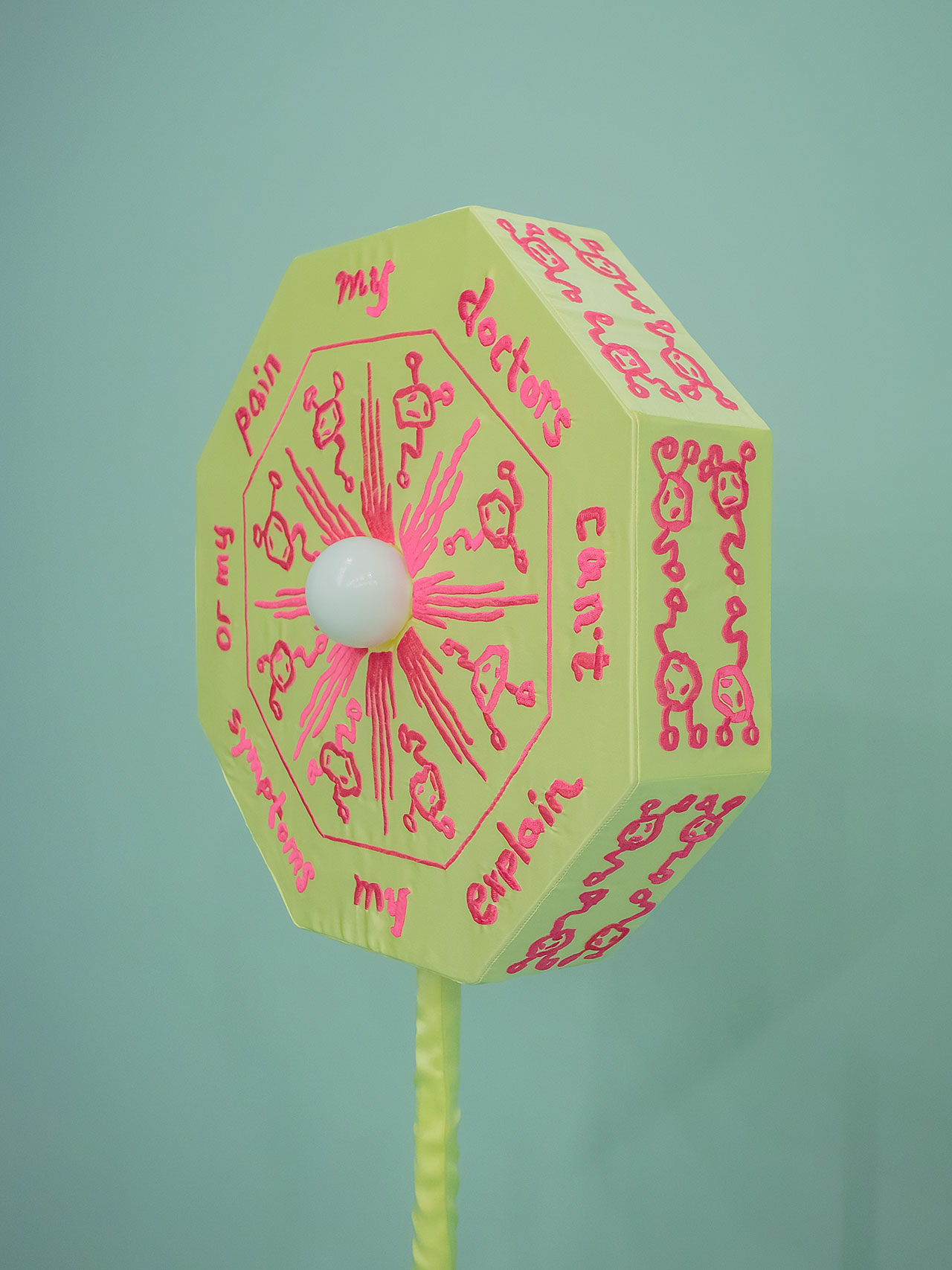
Photography © Duyi Han.
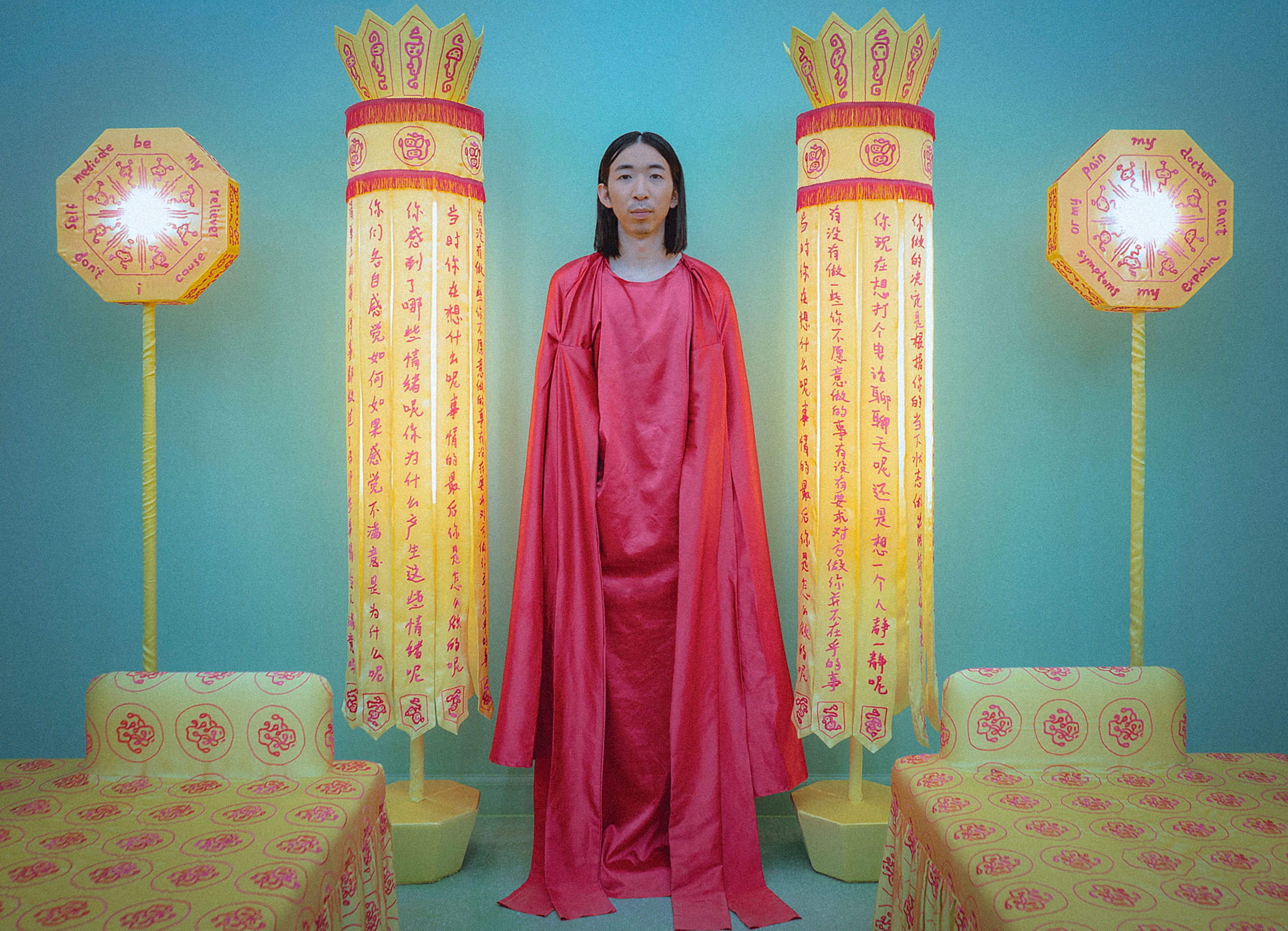
Videostill from "Hope this finds me well", directed & edited by Alexander Zeke Musca, designed by Duyi Han © Duyi Han.
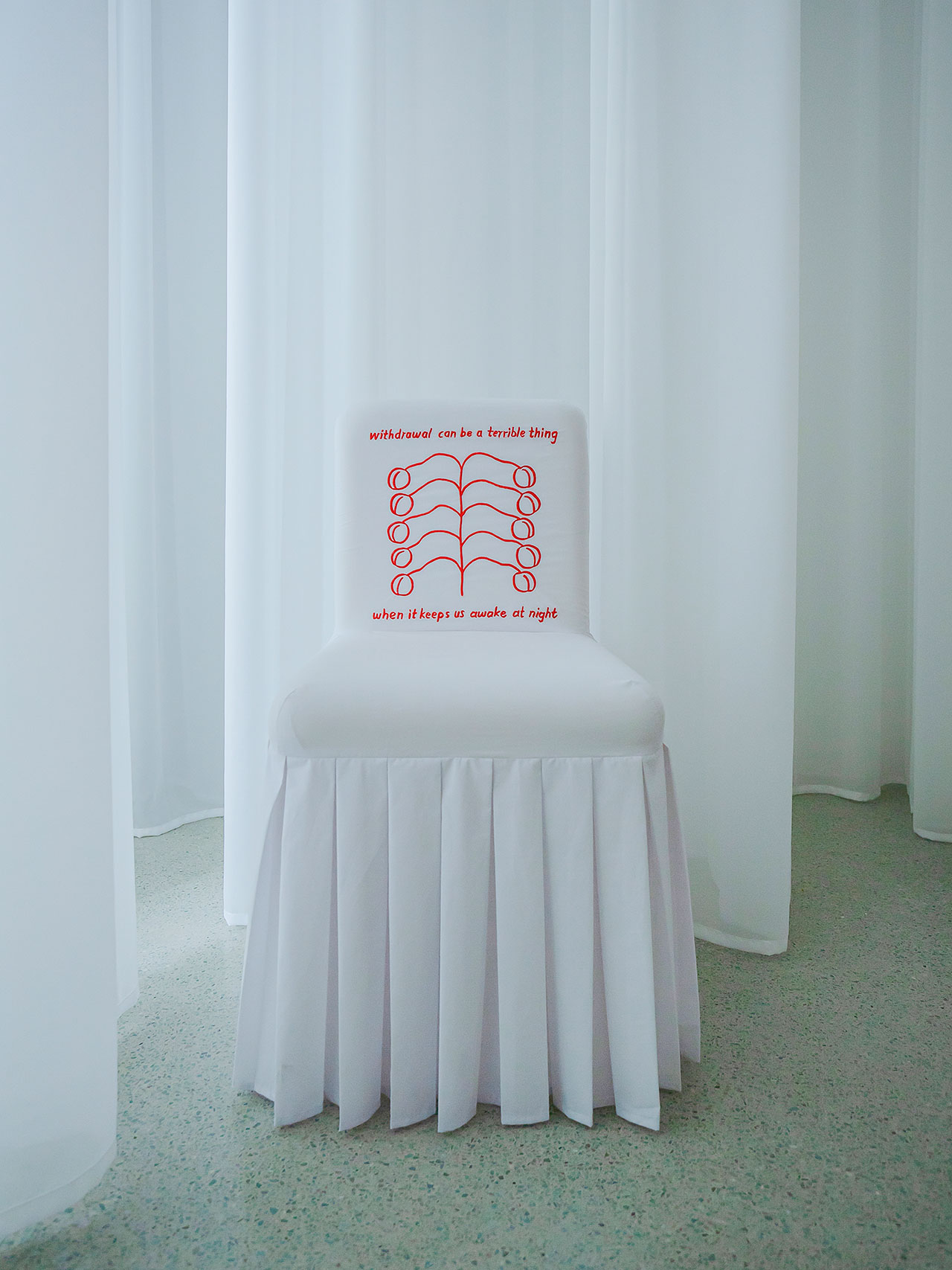
Photography © Duyi Han.
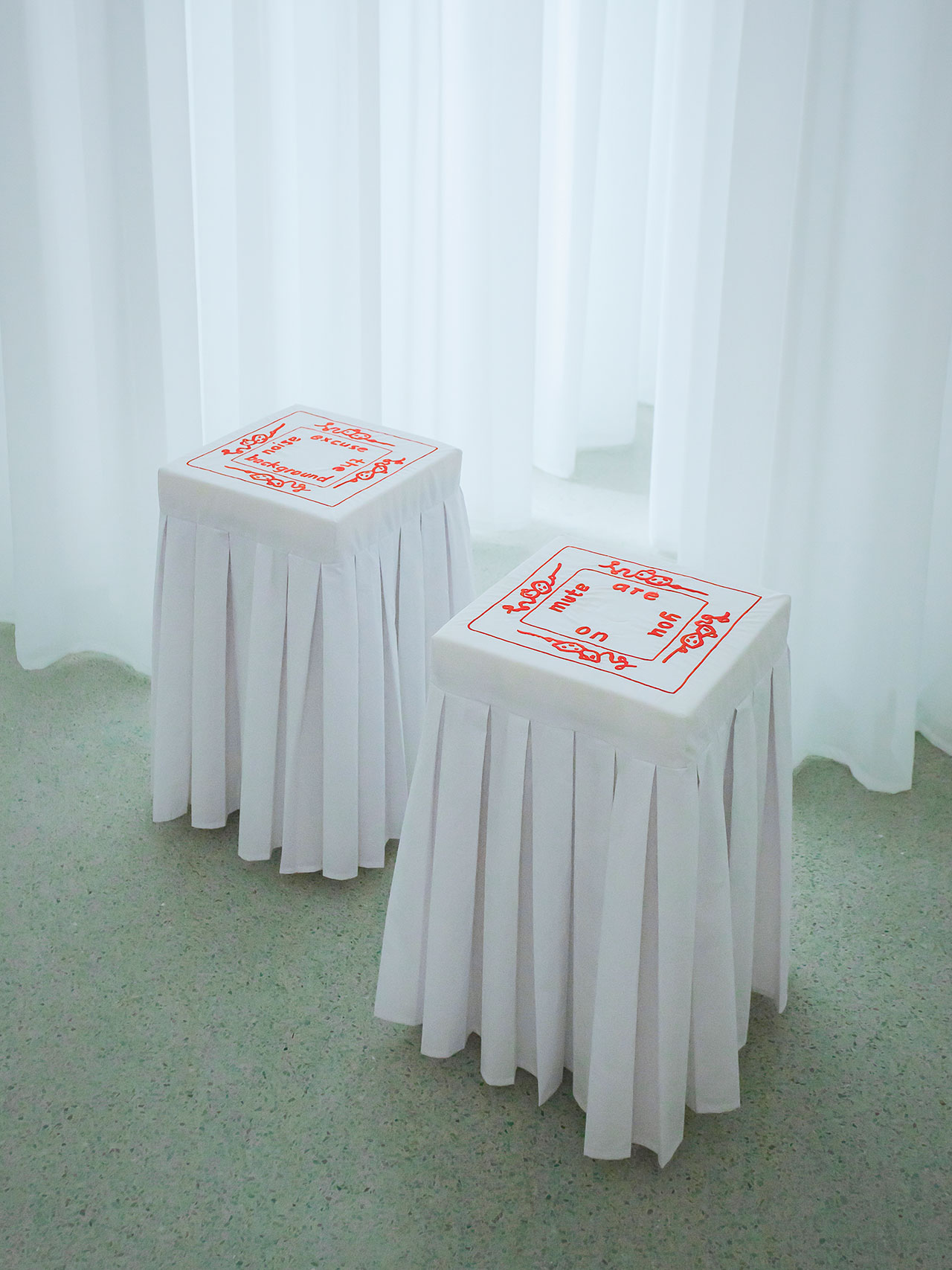
Photography © Duyi Han.
While the pieces reflect a contemporary belief in the scientific side of mental health, at the same time their antique-like aesthetic seems to be saying that cultural heritage cannot and should not be discarded. “I see collectible design objects as artifacts or devices that record human cultural history”, Han explains. “They are a contemporary continuation of the historic cultural objects you see in a museum.”
Completely upholstered in yellow or white silk fabric with soft foam padding underneath, including the tabletops, the furniture collection enhances the apartment’s dream-like ambience and therapeutic sensibility. Cheerful in their graphic exuberance and soothing in their silky softness, yet subtly menacing in their allusion to padded psychiatric wards, the pieces encapsulate Han’s multifaceted project and his intention to “confront, intimidate, confuse, hypnotize, provoke, embrace, soothe, or heal the audience”.
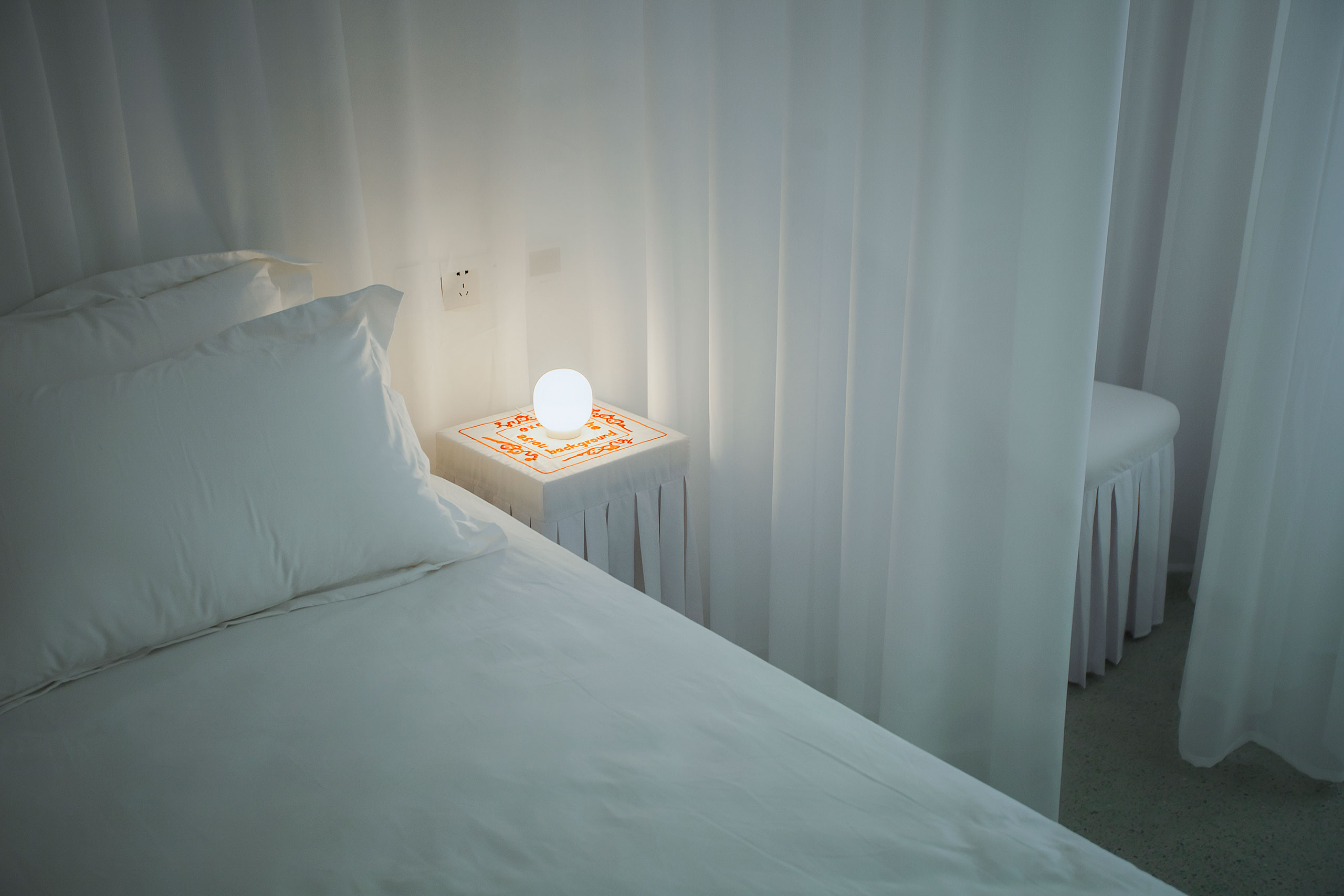
Photography © Duyi Han.
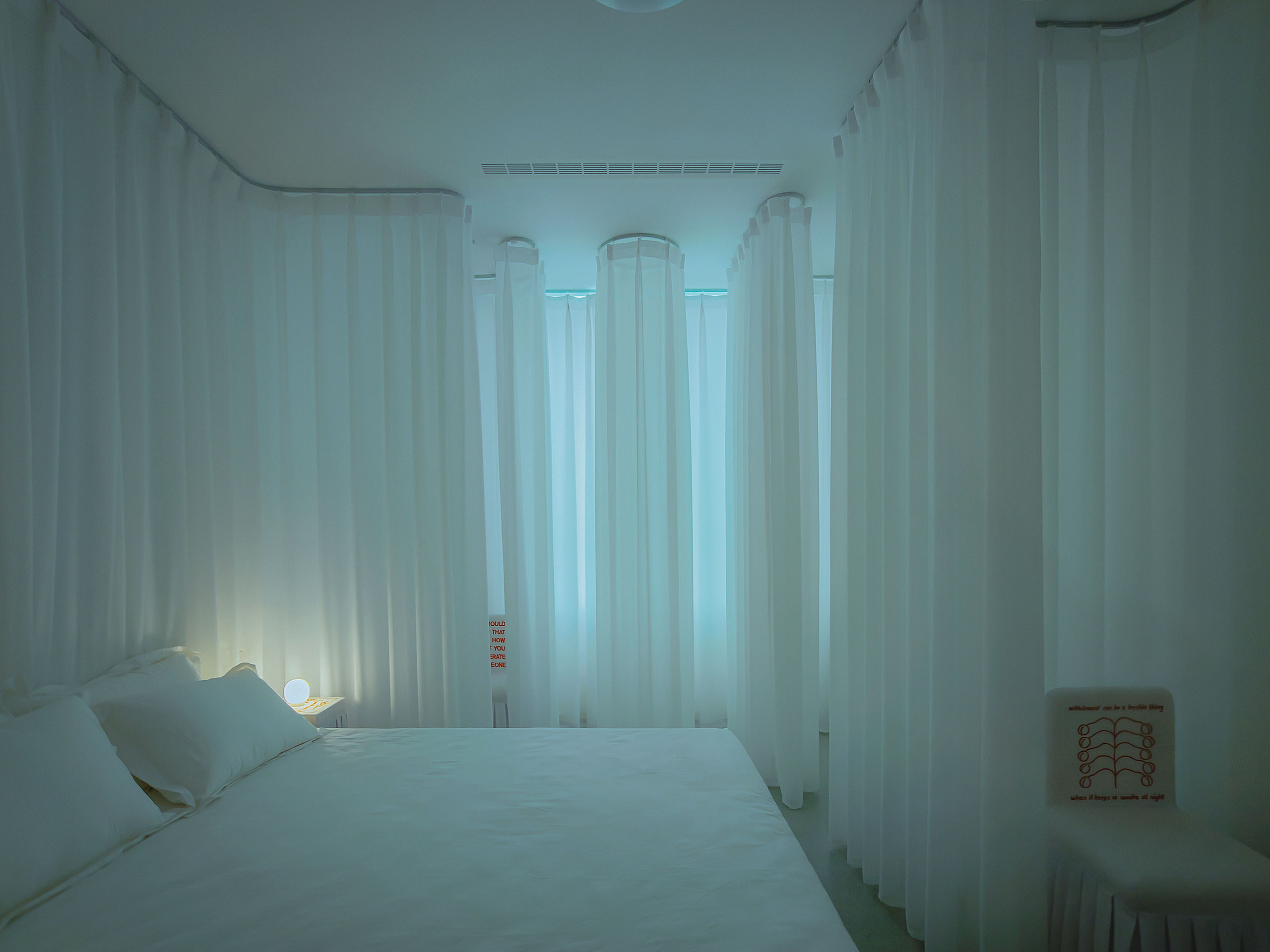
Photography © Duyi Han.
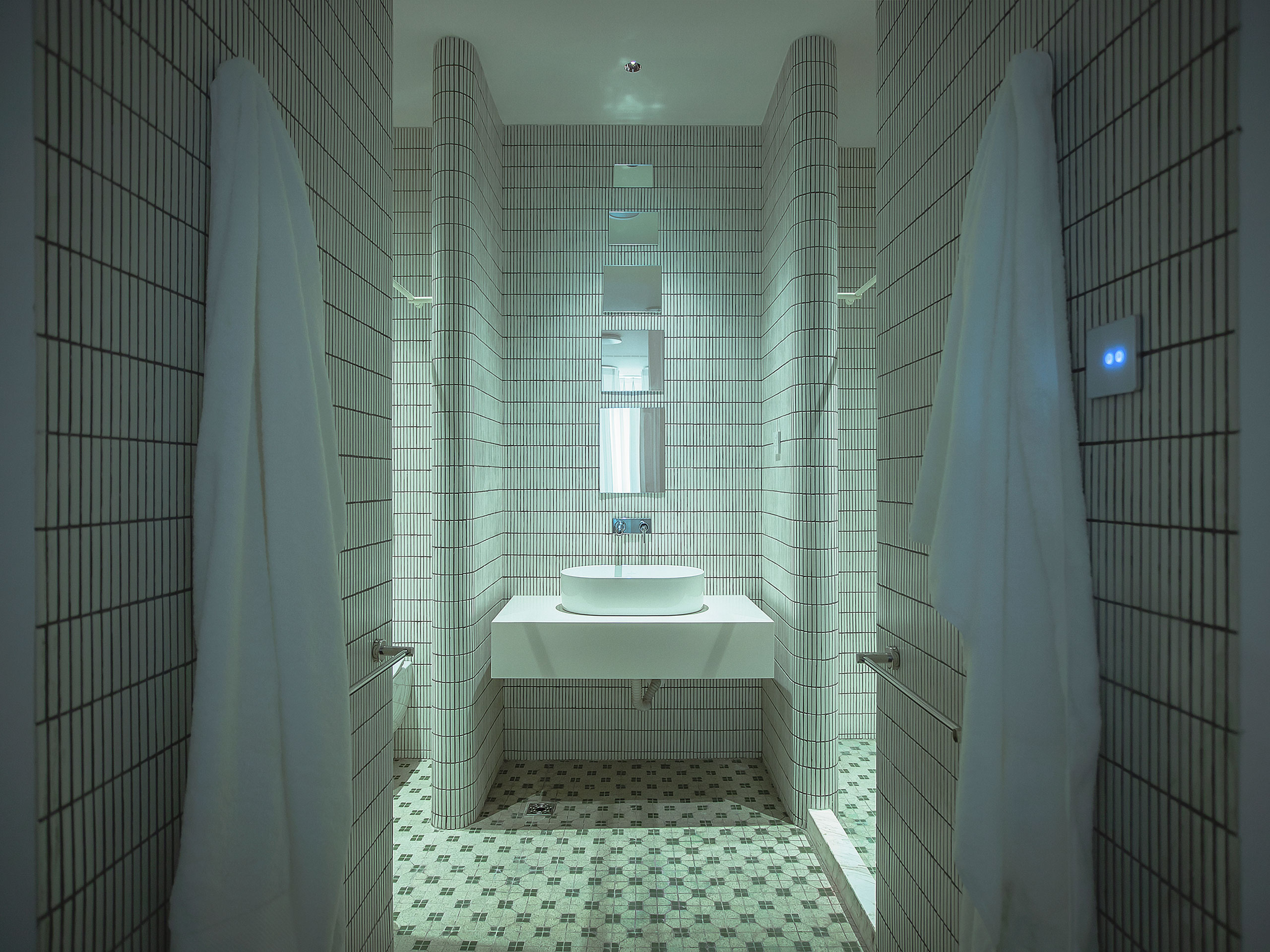
Photography © Duyi Han.
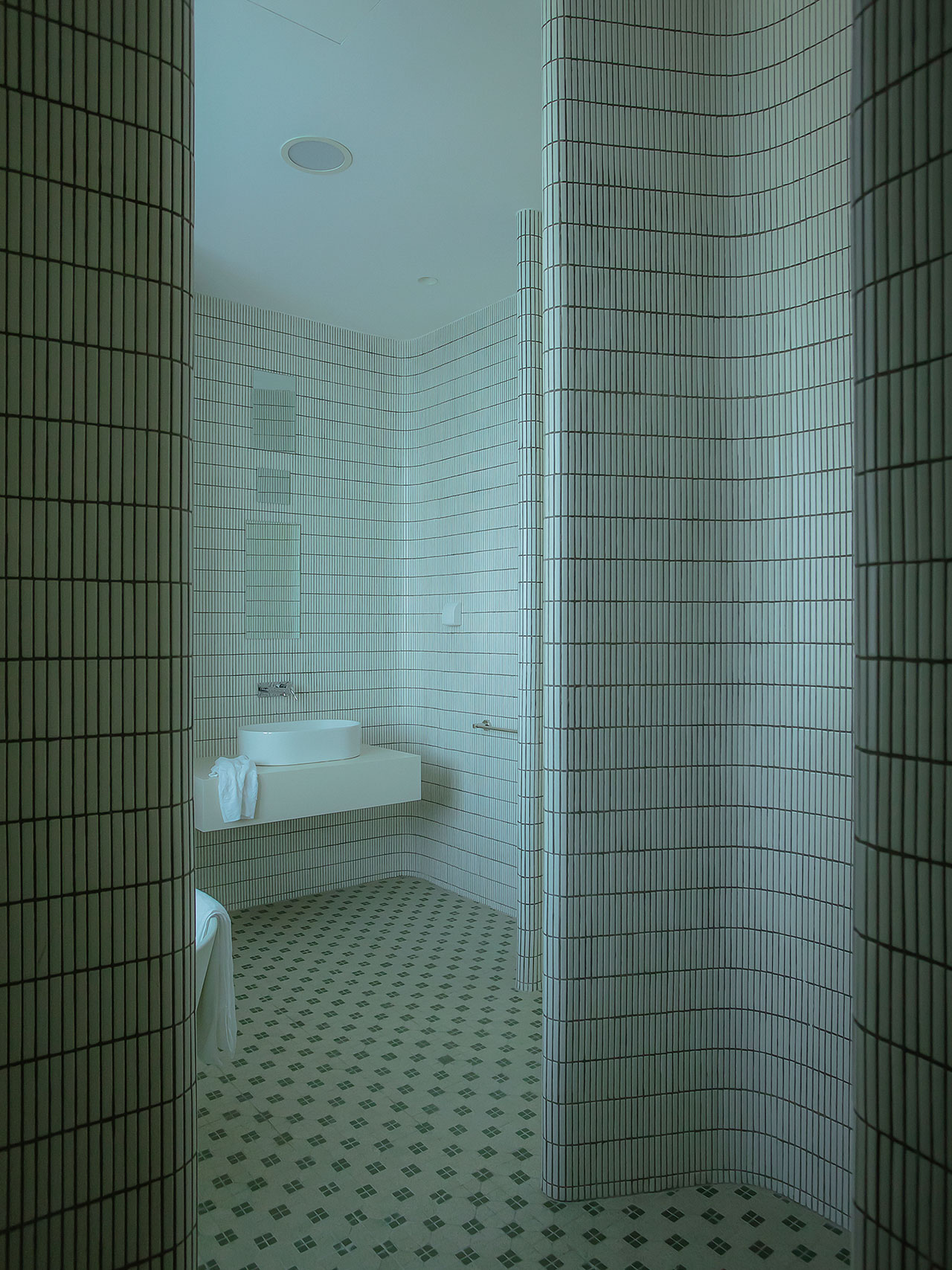
Photography © Duyi Han.
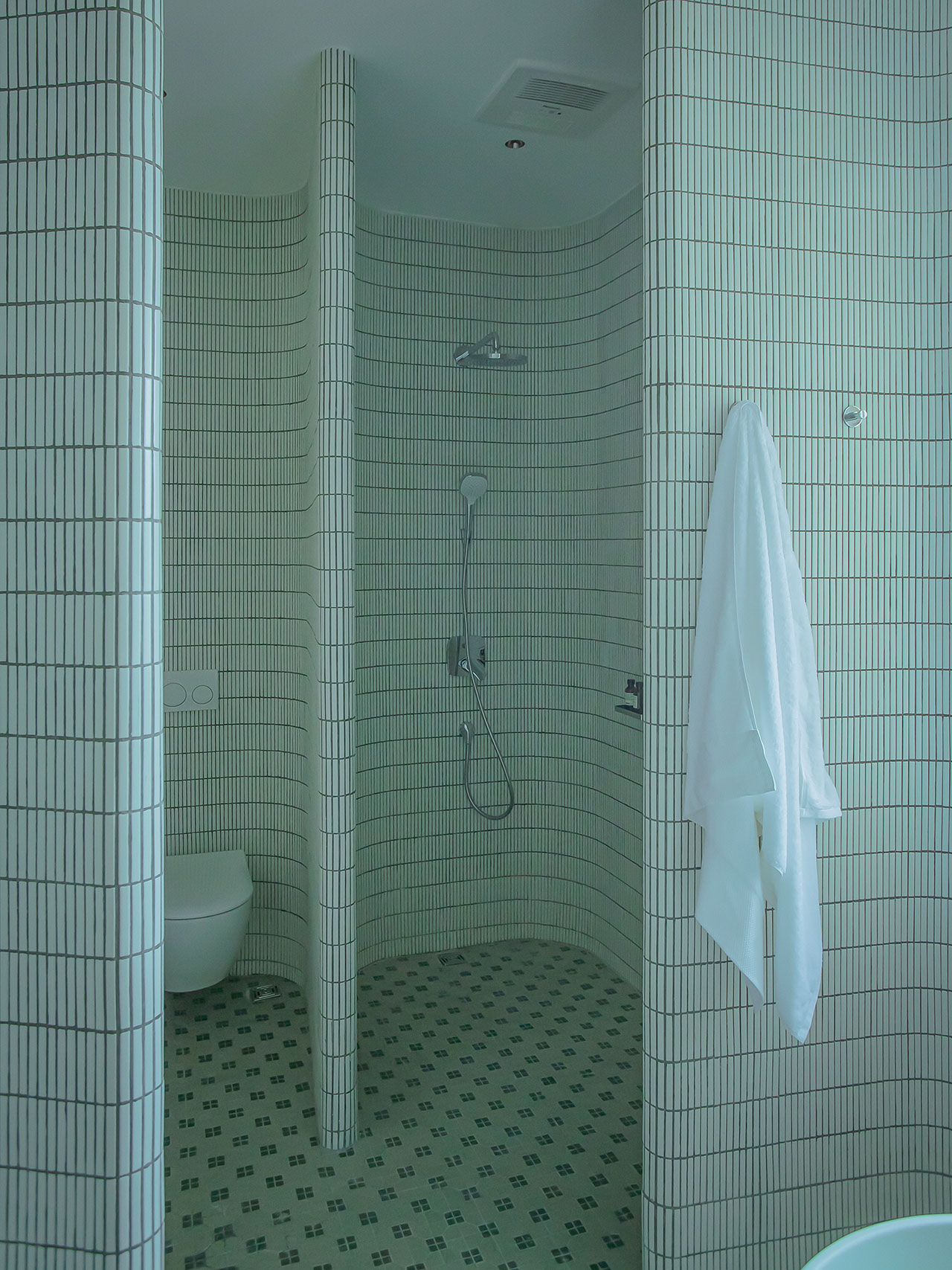
Photography © Duyi Han.
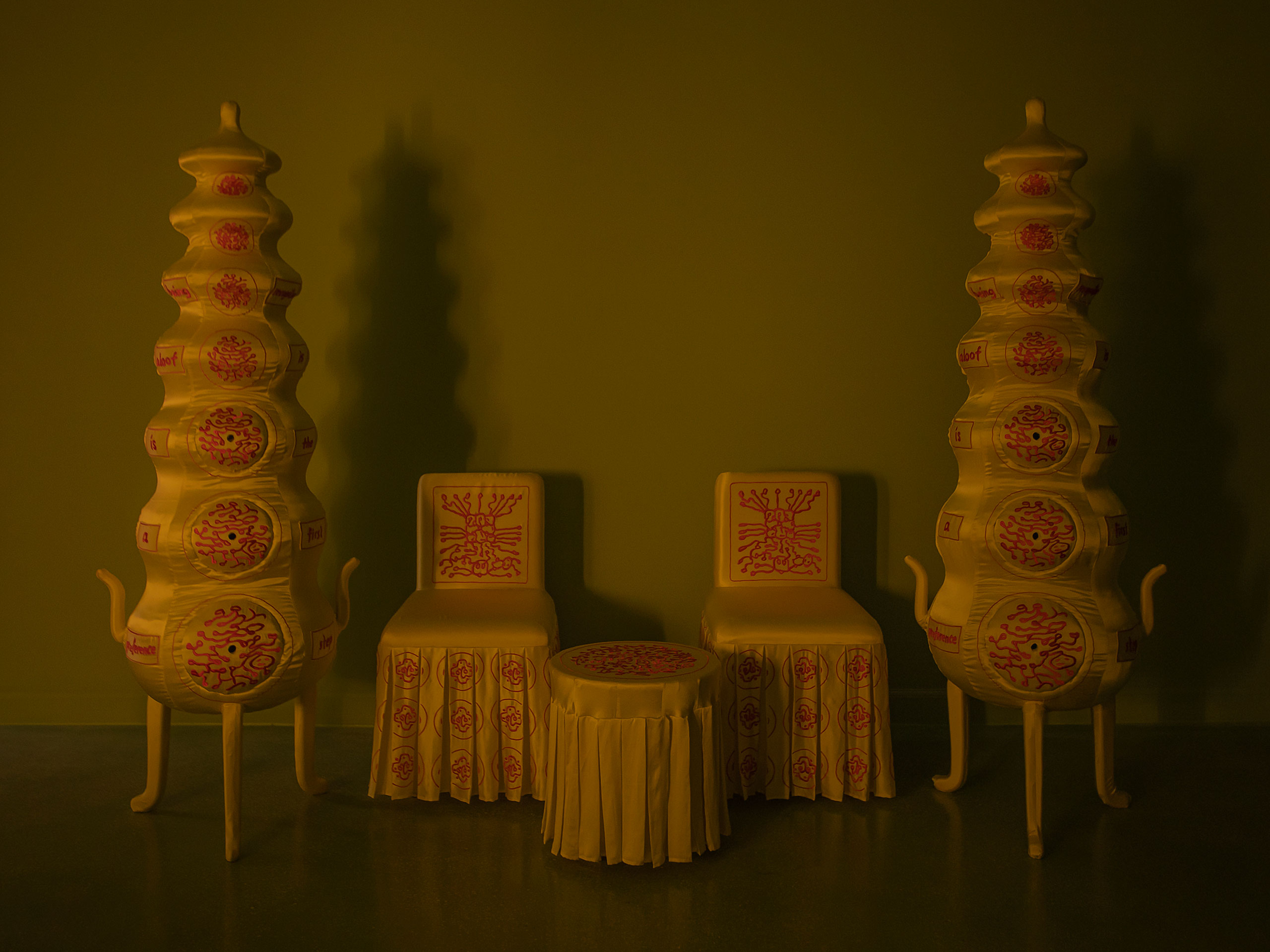
Photography © Duyi Han.
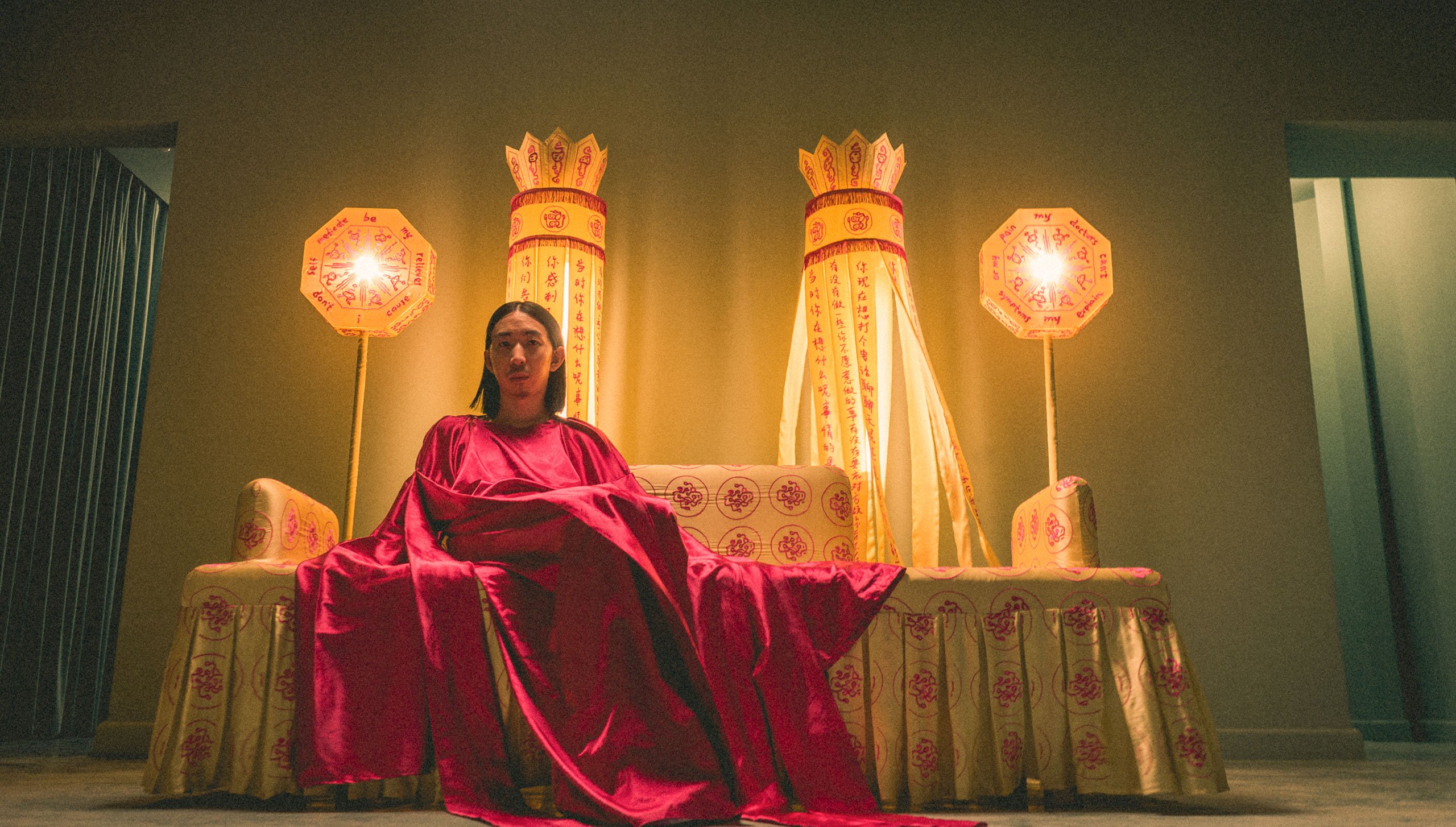
Videostill from "Hope this finds me well", directed & edited by Alexander Zeke Musca, designed by Duyi Han © Duyi Han.
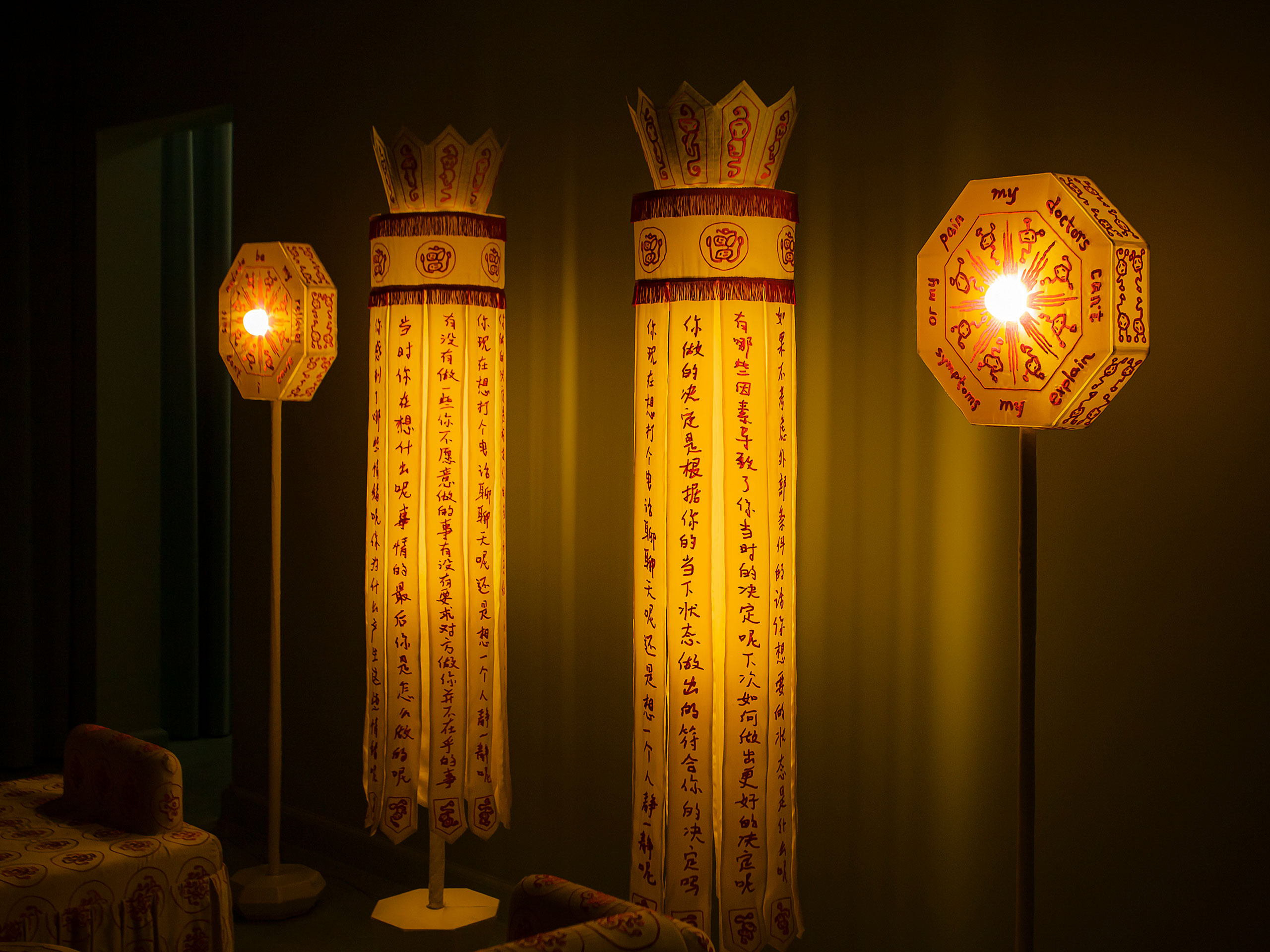
Photography © Duyi Han.
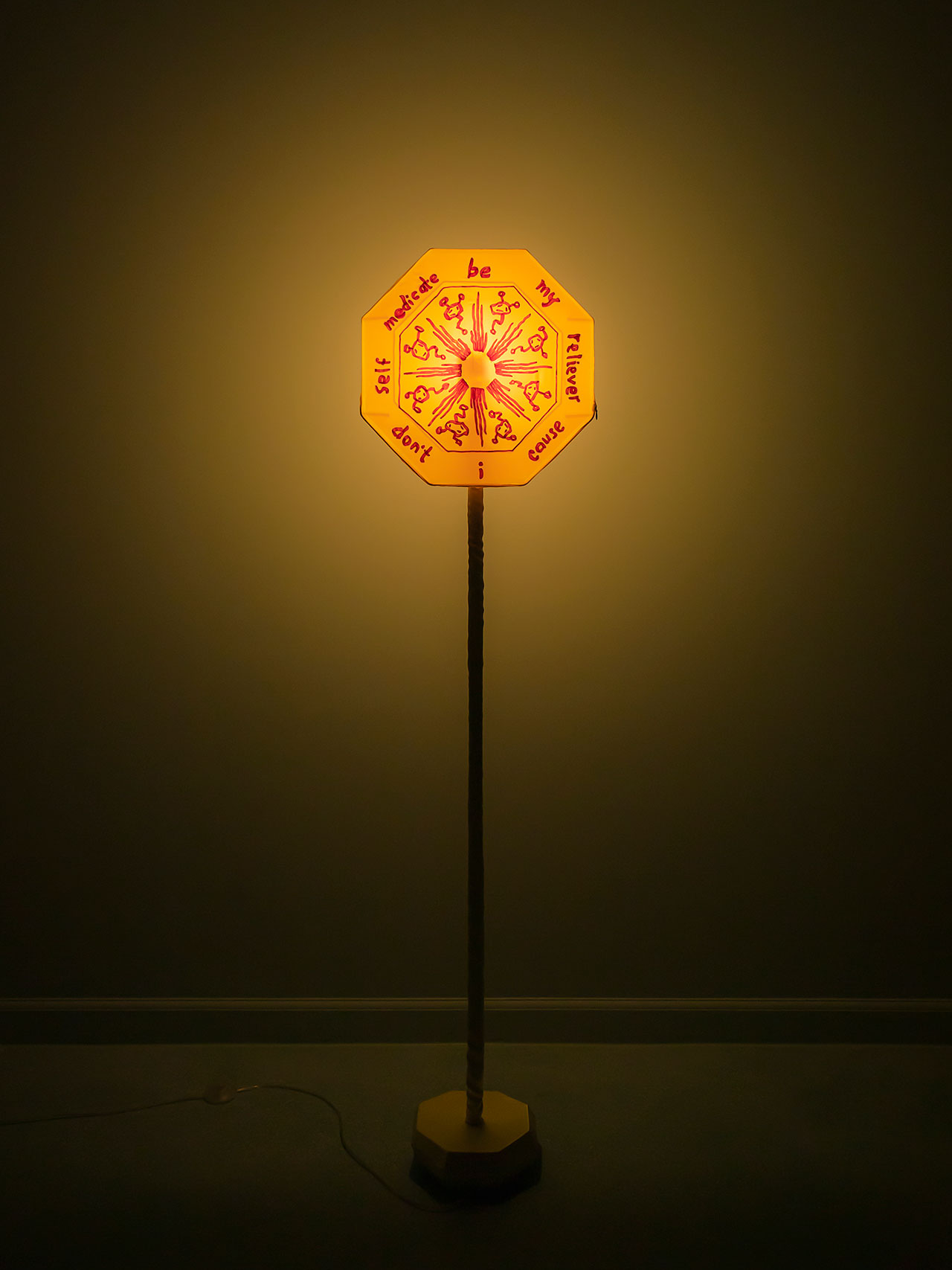
Photography © Duyi Han.





